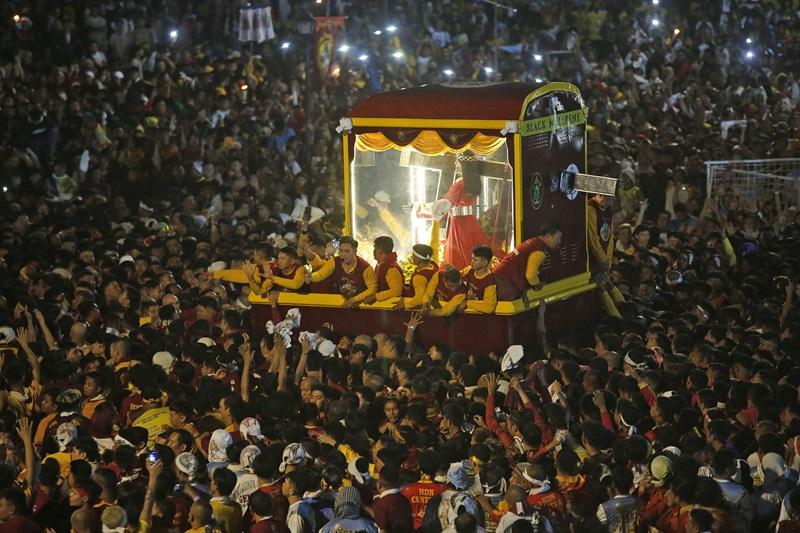Understanding the Filipinos' devotion to the Jesus Nazareno

The miraculous statue of Jesus Christ carrying a cross enshrined in the Minor Basilica and National Shrine of Jesus Nazareno in Quiapo, Manila has become a symbol of struggle and faith for many Filipino Catholics.
Massgoers and devotees come to the image of the Jesus Nazareno every day to pray for healing, a better life, and miracles.
Every year on January 9 during its annual feast day, millions of devotees take part in the spectacular religious procession or the "Traslacion," during which devotees carry a replica of the statue across Manila.
A devotee's participation in the Feast of Jesus (Hesus) Nazareno may be an outward manifestation of how intense his needs are, psychologist Dr. Randy Dellosa said.
“The greater the risk that they are participating in, that means the greater the intensity of their need is. For example, if it’s about social media, about likes and all that, they have a strong desire to have a lot of likes. It can range from something very superficial to something quite desperate,” Dellosa told GMA News Online.
“For instance, if they were bargaining for the health or the life of somebody or their own health or life, then they’ll probably brave the risks thinking that God will hear them better. If it’s out of gratitude and they received a blessing that they’re very grateful for, they might think it’s worth the risk showing the same level of blessing they’ve received. Psychologically, it’s about the intensity of the need that they have to do such a feat,” he added.
Devotion to the Jesus Nazareno may be linked to history, as religion and practices such as the feast were hand-me-downs by Filipino forebears, Dellosa said.
“From a cultural perspective, it’s quite obvious that we grew up with the Catholic faith. This is the religion of our forebears. Their practices tend to get carried down from generation to generation. There are many personal reasons. So, it’s very difficult to generalize, except that the faith may have been passed on and people may have their personal reasons for devotion,” Dellosa shared.
“It’s some type of conformity. It’s a conformity to the religious practices of their forebears or the people around them, so it makes them a bit more like everyone else. There’s a sense of safety in being like everyone else,” he continued.
He said the image of the Jesus Nazareno is "relatable" to the Filipinos.
“He’s relatable because he's dark-skinned, he appears suffering. He might be more relatable in that sense to Filipinos compared to other saints who look too immaculate or too clean,” he said.
Dellosa reminded devotees to maintain safe practices while participating in the feast and to express spiritual intentions rather than chasing superficial goals.
“While God honors the outward behaviors, I think God will honor much more what happens inside our hearts. So, he’ll be honoring more the internal changes that we make inside ourselves rather than just doing things outwardly or, for some, even just for show,” he shared.
The Feast of Jesus (Hesus) Nazareno will be held at Minor Basilica and National Shrine of Jesus (Hesus) Nazareno on January 9.
Earlier, the Quiapo Church administration released a schedule of activities ahead of the celebration.
Over 6.5 million people participated in Nazareno 2024, which was the first Traslacion parade conducted after a three-year break due to the COVID-19 pandemic. —LDF, GMA Integrated News




